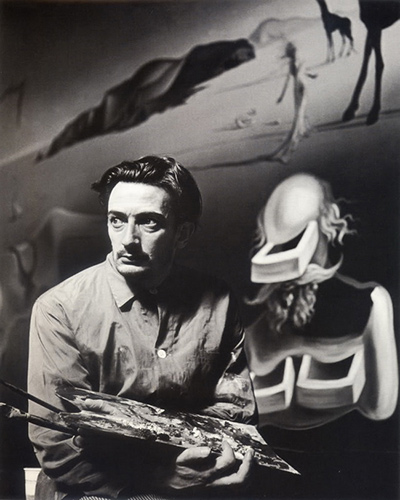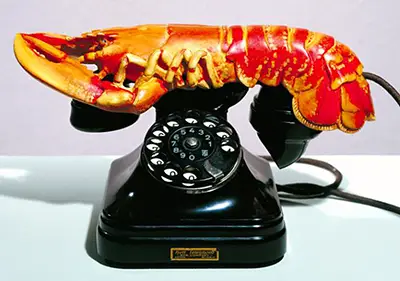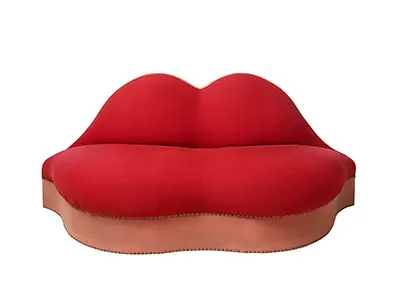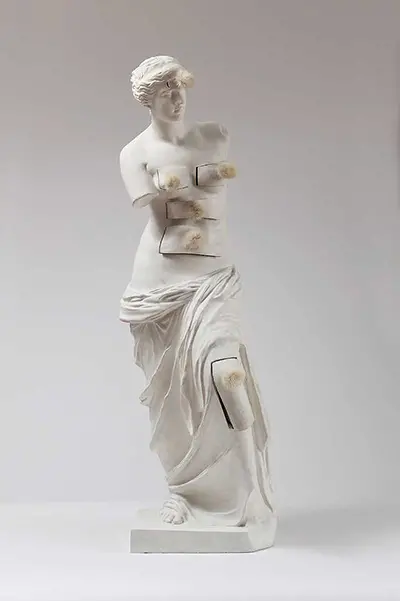Dali took this art medium in all manner of different directions, taking in a plethora of different techniques and materials to produce a wide ranging portfolio of work. The artist would also produce sculpture versions of some of the objects in his paintings, such as Persistence of Memory with his melting clocks, or his elephants carrying heavy obelisks on their backs in Elephants. He created sculptures in a variety of sizes too, with some being meant for display outdoors, whilst others were more flexible in where they could be placed. Some are fortunate enough to have some of his work installed within their local park or city square, and perhaps are even unaware of its significant origin.
The third dimension has been a major concern for painters since the later stages of the Renaissance and Dali's career placed a huge importance on it, within all mediums in which he worked. Sculpture allowed him to physically bring these forms of iconography to life as well as potentially bringing a level of interaction and a tactile nature to them that would never be possible with his paintings or drawings. One can also argue that by being embedded within a local community, sculptures leave a greater legacy than the alternative which would be static artworks potentially stored away in a private collection. It was now also possible for unseen elements from his static artworks could be added in, giving a potential for different angles to present a variation to the viewer. Some of the iconography found across his paintings which were then extended into his sculptures included his melting clocks, Alice in Wonderland, Venus, the goddess of love and also snails.
This artist would not label these items as sculptures, but rather Surrealist Objects. Perhaps he was right to do so, as many would not fit the traditional definition of sculpture, and he never wanted to be constrained by existing labels. His work under this category was also so diverse in so many different ways, that a single label would never be appropriate. Some of his most famous sculptures would be the Lobster Telephone, the Mae West Lips Sofa and also Rainy Taxi. What immediately strikes you is how different even these three items are, when compared to the more traditional sculptors such as Donatello and Gianlorenzo Bernini. The Dali language existed across mediums very comfortably and he would later continue into jewellery, where similar themes could again be found. There seemed no limit to his ambitions nor his desire for self-expression.
Dali can be considered to be naturally curious about the art form of sculpture, having created his very first piece as a child. Venus de Milo was a small piece that he produced after seeing an image on his pencil case whilst at school. Very few children would have had this thought in their mind at that early age, but Salvador was a true prodigy who was pretty much born with artistic intent, and was only slowed down by the time it took him to learn the various technical requirements of each medium. He produced sculpture throughout his long lifetime, though it was particularly frequent in certain periods of his career. It is an art form which can require a considerable overhead in terms of materials and tools, and so when he had everything that he needed available, it would have made sense to concentrate on this for some time. There were also to be the financial merits that sculpture offered many artists, where reproductions could easily be made and also sold on in limited numbers that could command high values.
Dali is one of the true international artists, where his reputation and fame have managed to reach each and every corner of the globe. This is underlined by his outdoor, large scale sculptures which can be found in several different continents. Asia, for example, features a number of his works in the streets of Hong Kong and Singapore, whilst European cities such as London, Madrid and Paris also have items from his career that can be visited in person and are now subjected to the elements on a daily basis, just like the rest of us. This accessibility is important for reminding the public of the wealth of merits found in art, with many being unwilling to enter art galleries or museums particularly often. The rise of graffiti artists such as Banksy and Basquiat has also shown how the modern media tend to flock to the promotional side to the art industry and Dali himself was at the forefront of this several decades ago. This artist was so innovative in so many ways that it is hard to summarise either his career achievements or his extensive and varied oeuvre in just a few paragraphs.
An interesting development occurred in Dali's career after a chance meeting between the artist and a dealer in Madrid, 1973. The artist desired a painting hanging in the gallery but the owner wanted an unusual arrangement in order to part with it. He asked for Dali to complete a series of sculptures that he would then be able to sell on via his gallery, and in return he would grant the artist this painting. Eventually, Dali agreed to the deal and went about contributing a number of sculptures to the gallery owner for quite some time. The artwork that he received in return is attributed to Goya, one of his favourite artists, and now hangs in one of the museums set up to display items from his extensive career. This arrangement began a small industry in Dali sculptures which continued even after the dealer had started to struggle to keep paying for this endless supply of work.
Isidro Clot, the gallery owner who displayed this strong business-mind, would accept a number of small maquettes, which are types of preliminary sculpture study pieces. Dali created them using wax, with which he needed to work within a small window of time in order to complete his touches before the material was no-longer pliable. They would keep this collaboration going for several years until Clot started to run low on funds and at that point he partnered with another art dealer, Juan Quirós, who helped to finance the continuing agreement with the artist. Dali would also provide letters of authenticity with each of these items so that no-one could question their origin, and their value would remain protected as a result. In the years after this, some disagreements would occur between a number of parties which left the ownership of some of the sculptures disputed. His sculptures continue to be released in limited edition series even in the present day.
Many artists over the centuries have been forced to work tirelessly in order to cover large financial outgoings or debts. Rembrandt, for example, found that his self portraits were particularly popular with local buyers and so he could cope with his own financial mismanagement as long as he could work fast enough. Salvador Dali led a truly extravagant lifestyle and had to find ways to finance this. He was not someone who could limit his spending or his eccentric behaviour and so he needed to turn elements of his career into a business. Whilst he would never have wanted to tailor his own artistic independence, he saw the commercialisation of his name and reputation as a necessary evil towards continuing his flamboyant behaviour. Even in his death, Dali as a company or brand has continued onwards, almost building momentum with the arrival of the internet, allowing more companies with a connection to his career to be able to offer sculptures of his with a variety of levels of authenticity.
Besides his sculptures, the same occurred with his prints as well, with the artist authorising multiple reproductions of his original works that could be signed, numbered and then sold on to local collectors. Whilst these activities might have damaged his legacy, to a certain degree, it has also had the impact of keeping his name relevant for the past two decades since his death. The sheer brilliance of his work, and adaptability across multiple mediums, means it is also impossible to really damage his overall reputation, in any case. He is seen, alongside Picasso, as one of the most talented artists in history and will remain a household name for centuries, whatever occurs in the private sales market regarding the reproduction of his prints and sculpture moulds. Additionally, we have the problem of how several Dali experts will often disagree with each other over the authenticity of various sources of his products, or even specific artworks themselves. The artist became aggressive in his exploitation of his reputation at some points in his career and would hand over some elements of documentation to different individuals, meaning the truth is now spread between a number of people, making confusion inevitable.
Whilst Dali is known to have authorised a number of others to produce sculptures in his name, it is very difficult to know how many of the current producers have an acceptable level of permission to create and sell sculptures in his name. He is reported to have also openly allowed a proliferation of his signature at times, for example, and this has almost encouraged this confusing situation to come about. To see reproductions still being produced, twenty years after his passing, has left a number of art historians in dismay at what they see as a deliberate attempt to profit from this master's legacy, sometimes with very tenuous connections to his original permissions. The desire to have something in your home that theoretically connects to this great man can often over power a person's natural caution and that is how some of the more questionable businesses are managing to thrive so successfully. Those looking for assurance should always refer to the official representatives of the artist's estate.





